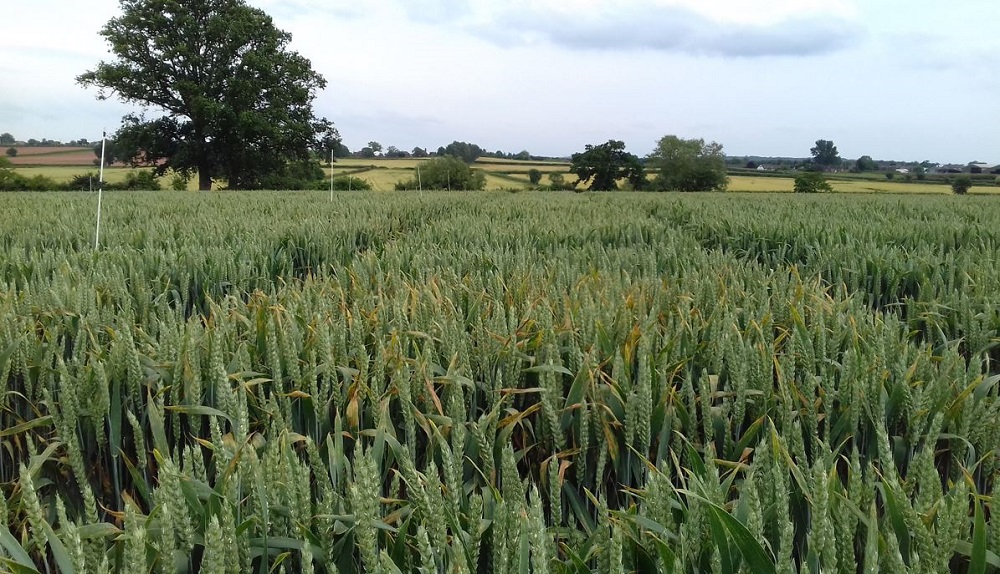- Home
- Knowledge library
- Wheat fungicide margin challenge 2021 (ADAS/AHDB)
Wheat fungicide margin challenge 2021 (ADAS/AHDB)
Summary
The challenge
With a reduction in availability and efficacy of key inputs in the arable sector, the need for integrated pest management (IPM) is increasing. Additionally, farmers are increasingly aware of the cost of production associated with their grain. As a result, there is tremendous interest in lowering input costs and an increasing focus on margins (rather than yield).
AHDB fungicide performance work provides high-quality, independent information on the efficacy of fungicides against key diseases in wheat, in addition to barley and oilseed rape. The results can be used to help build fungicide programmes – based on mixtures of active ingredients and products. However, this element requires attention to detail to ensure spray decisions are appropriate to the local disease-threat profile and follow best practice anti-resistance guidelines. The industry would benefit from coordinated and facilitated activities that promote discussion on the nuances of fungicide programme design.
The project
The ADAS/AHDB wheat fungicide margin challenge connects farmers across a network of regional sites to develop crop management strategies that focus on margin maximisation, rather than headline yields.
The challenge provides a fair comparison between farmers’ regional fungicide strategies in winter wheat plots (with a locally popular variety) on a single site. All of the plots are taken through to harvest. The aim is to achieve the highest net margin.
In 2019, the approach was tested at a single site (Herefordshire). In 2020, the challenge covered three regions (West, East and South). In 2021, the challenge was widened to include six regions.
The rules
- Each region features around 10 AHDB entrants*
- Entrants design a bespoke fungicide programme, with application overseen by ADAS staff
- ADAS includes three additional fungicide strategies for comparison: ‘untreated’ (no fungicides), ‘blockbuster’ (very high fungicide inputs to establish yield potential) and an ‘expert’ entry
- Standard spray timings are used: T0 GS30, T1 GS32, T2 at GS39 and T3 at GS61–65
- All other inputs (excluding fungicides) follow standard farm practice and are applied by the host grower
- Each programme is replicated on four randomly allocated plots (minimum plot size of 20m2)
- Entrants receive in-season updates on crop/disease progress
- ADAS records fungicide spend, disease levels and grain yield
- Although strategies and results are shared among participants, entrants are not revealed (without permission)
- Margins are calculated for each treatment, based on average grain prices and average fungicide and application-cost data
*AHDB entries consist mainly of Monitor Farmers, Steering Group members or Arable Business Group members. This approach provides wider benefit, as the approaches taken are used as a basis for discussion at on-farm meetings. The AHDB Farmbench tool is also used to allow growers to directly compare their own fungicide strategies against those entered in the challenged. Although no report will be prepared, headline results will be communicated via AHDB’s communications channels.
Also…
In this AHDB podcast, Philip Dolbear, AHDB's Senior Knowledge Exchange Manager, talks about the Fungicide Challenge with ADAS’ Chloe Morgan and Jonathan Blake and AHDB Saltash Monitor Farm host Ashley Jones.
Wheat fungicide margin challenge results 2021 – Watch Chloe Morgan’s presentation at the Agronomists’ Conference 2021.
Key points
- In 2020, a relatively low septoria pressure year, the lowest cost programmes delivered the highest margins
- In 2021, higher disease pressure resulted in moderate–to–high spend programmes achieving the highest margin over fungicide cost
- Multi–site fungicides were a valuable addition – 5 out of 6 winning programmes featured a multi-site
- It is important to know what yield response you can achieve to help budget for fungicide spend
Downloads
PR638 fungicide margin challenge 2021 results (anonymous) PR638 summer disease assessments (2021)Related resources


